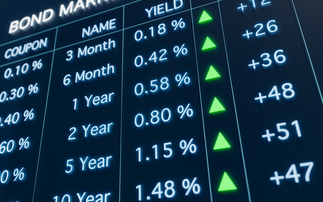
It's back to the 1990's and early 2000's with Labour in power: but what does this mean for bonds?
Labour has won a commanding majority, as expected by the polls. This landslide victory for the Labour Party is similar in magnitude to the majority afforded to Sir Tony Blair when he became Labour Prime Minister in 1997. While we're back to the 1990's and early 2000's in terms of the political regime, we argue it is also back to this period for the bond market as well. The 1990's saw a series of interest rates hikes which prompted crisis after crisis. Relative to 2010-2021, this was a period when rates were higher, investment grade credit performed well relative to lower quality credit and fundamental credit analysis mattered.
With the election noise fading, fundamentals and valuations will once again drive bond markets. Accordingly, we continue to de-risk the credit in our portfolios and play for lower yields and steeper curves. Investors should not look to the period of ultra-easy monetary policy between 2010-2021 as a guide to the next decade, this was a highly unusual and accommodative period for financial markets. The implication here is that what worked well during the 2010-2021 period may not work well for the period ahead.
Figure 1: Average of key fixed income variables during different time periods
Source: Fidelity International, Bloomberg, 28 June 2024. UK Inflation refers to UK CPI EU Harmonized YoY NSA. IG and HY is investment grade and high yield respectively. IG Corporate Spreads uses ICE BofA Global Corporate Index and HY Corporate Spreads uses ICE BofA Global High Yield Constrained Index. 2008 and 2009 ignore due to Global Financial Crisis period distorting the figures. Corporate spreads data only available from 1996. Simple averages used.
We are back to a period of higher rates, but high yield spreads remain tight
As figure 1 shows, June 2024 is somewhat similar to pre-2010 in terms of the level of UK Bank Rate and 10yr gilt yields, while inflation is similar (while lower than the 1990's) and growth meaningfully lower. Meagre growth and moderating inflation support our thesis that the Bank of England (BoE) will ease policy this year.
The pre-2010 period also saw markets make a larger distinction between the quality of corporate issuers in terms of spread levels, with the spread difference between high yield (HY) and investment grade (IG) issuers much higher then, than today. This makes sense to us. Higher rates make debt refinancing more difficult for lower quality companies and refinancing risk is the key risk we our monitoring with our credit analysts. While this can be more of a cashflow issue in the short term, refinancing trouble can quickly become a balance sheet problem via lower cash reserves, forced asset sales, covenant breaches and ratings downgrades. This will lead to a growing divergence between companies with strong and weak balance sheets and would likely see a period of underperformance of HY over IG in spread terms, like we saw pre-2010.
The market underappreciates these risks in our view, and we continue to be underweight to sub-investment grade where it is part of our benchmarks. The valuations simply don't stack-up. To illustrate, the extra credit spread investors receive for lending to a double-B (high yield) company over a triple-B (investment grade) company is a mere 70 basis points in US Dollars, this is the 3rd percentile! To put it another way, at today's spread-level investors have been able to achieve more credit spread for investing in high yield versus investment grade 97% of the time since 2006…
The good news is, dispersion is beginning to pick-up, albeit from a low base, which should bode well for active management. It didn't pay dividends to conduct proper credit due diligence in the period of ultra low rates, but it should from here on, just like it did when rates were at ‘normal' levels like today. This will be a more challenging environment but those with the credit research capability and experience to navigate such times should prevail.
Labour or Conservative, it shouldn't matter much for gilts with fiscal stances constrained
In the days following the 1997 general election, the incoming Labour government provided the Bank of England (BoE) with operational independence to set monetary policy, where prior to this final responsibility for setting interest rates lay with the chancellor of the exchequer. This move caught up with the Federal Reserve (Fed), which had been independent since 1951. While this was a big announcement for bond investors, we do not expect moves of similar magnitude following this election result.
Figure 2: Evolution of 10yr gilt yields, UK Bank Rate and UK inflation
Source: Fidelity International, Bloomberg, 31 May 2024. "UK Inflation" refers to UK CPI EU Harmonized YoY NSA.
Key for us is the future path of policy rates
A Labour victory with a commanding majority was in the price. However, both the Conservative and Labour party refrained from an expansive fiscal stance meaning there has been little to upset gilt markets so far. Investors are already aware that gilt supply is set to stay high, and one could argue there has been more to be concerned with elsewhere in Europe, notably France. We therefore expect this election outcome to have a limited medium-term impact on gilts.
For us, the key is always the likely impact on the future path of policy rates. Now the election is out of the way, attention will quickly turn to the data, and with inflation continuing to moderate (see figure 2) and growth weak, we expect the BoE to ease later this year. Any weakness in rates may provide an opportunity to add to our already long duration views, and we continue to play for steeper curves.
Spreads remain tight so we continue to de-risk credit
Coming into this election we were defensively positioned from a credit perspective, largely for valuation reasons rather than risks around the election result. A Labour win was in the price, and we are looking through to the fundamentals and valuations to form our view of credit, and will use any volatility around the election to position the portfolios in line with our longer term views.
Corporate bond spreads remain at the tighter end of the historical range (see figure 3) which is why we continue to de-risk the portfolios. There are pockets of value within IG credit, notably in the securitised part of the market, at the short end of the curve (via 1-5yr credit), and in the politically sensitive water sector. For the latter, volatility is likely to remain, with a draft determination from the sector's regulator Ofwat due in July and final determination later in 2024. We continue to think that government action to haircut water company debt would lead to a significant repricing in the broader water sector and other regulated utilities. Making the debt financing for core UK infrastructure unattractive for bond holders is not an ideal outcome for any government.
Furthermore, there could be some single-name volatility around areas where Labour has focussed policy, such as utilities, energy and banks. For example, Labour has proposed to raise the Energy Profits Levy on oil & gas companies by 3%, and remove "unjustifiably generous" investment allowances. It is important to remember that higher taxes for corporates tend to be more of an impact for equities and less of a concern for credit.
Figure 3 & 4: Credit spreads and country of domicile
Source: Fidelity International, Bloomberg, 31 May 2024. IG refers to Investment Grade. GBP IG Credit = ICE BofA Euro Sterling Index; USD IG Credit = ICE BofA US Corporate Index; EUR IG Credit = ICE BofA Euro Corporate Index and Global IG Credit = ICE BofA Global Corporate Index.
Sterling corporate bond market is very global in nature
It is always important to note how global the sterling corporate bond market is. As figure 4 shows, just 43% of the sterling IG credit market is UK-domiciled. Interestingly, this makes the sterling corporate bond market less concentrated (by country) than the global corporate bond market, which is 57% US-domiciled.
The point is, sterling credit spreads tend to be driven by global factors more so than UK-domestic factors. Ultimately, the impact of this election is likely to be muted for sterling credit spreads. There are certain single-names which are due more attention, such as in the water sector, but overall, UK macro factors are a more important consideration for interest rate decisions over credit decisions.
Important information
This information is for investment professionals only and should not be relied upon by private investors. Past performance is not a reliable indicator of future returns. Investors should note that the views expressed may no longer be current and may have already been acted upon. The value of bonds is influenced by movements in interest rates and bond yields. If interest rates and so bond yields rise, bond prices tend to fall, and vice versa. The price of bonds with a longer lifetime until maturity is generally more sensitive to interest rate movements than those with a shorter lifetime to maturity. The risk of default is based on the issuers ability to make interest payments and to repay the loan at maturity. Default risk may therefore vary between government issuers as well as between different corporate issuers. Due to the greater possibility of default, an investment in a corporate bond is generally less secure than an investment in government bonds. Fidelity's range of fixed income funds can use financial derivative instruments for investment purposes, which may expose them to a higher degree of risk and can cause investments to experience larger than average price fluctuations. Reference to specific securities should not be interpreted as a recommendation to buy or sell these securities and is only included for illustration purposes. Investments should be made on the basis of the current prospectus, which is available along with the Key Investor Information Document (Key Information Document for Investment Trusts), current annual and semi-annual reports free of charge on request by calling 0800 368 1732. Issued by FIL Pensions Management, authorised and regulated by the Financial Conduct Authority. Fidelity International, the Fidelity International logo and F symbol are trademarks of FIL Limited. FIPM: 8285













